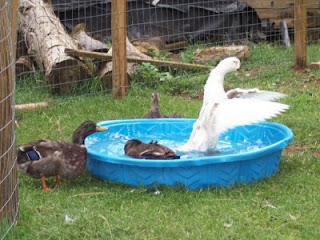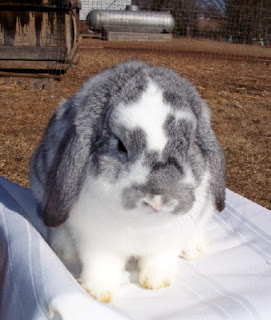 |
| Addison Reddick and Lance & Ellye Sawyer pet a pregnant Gertrude |
 |
| Minerva Jane-one of the dairy goats |
 |
| Gertrude the (very wide) guard donkey! |
I watched as my 30 year old Morgan horse, Cody, walked up to a little girl who barely came to his chest, stopped a respectful distance away and gently lowered his nose to her hand to be touched.
 |
| Cody |
Heritage turkeys and geese strolled through the fallen leaves and we talked about the importance of raising animals naturally and in a clean and healthy environment.
 |
| Heritage Bourbon Red turkeys graze in the fall sunshine |
One boy looked at the turkeys pecking through the grass and leaves and commented on how clean they were and how bright and shiny. Rufus, the mini pig, was a big hit as always although he had to go into "time out" a few times for stealing sweet potatoes out of the farm store boxes!
 |
| Rufus finishing off the Gala apples |
When the last person had trailed down the drive, and Rufus had drug himself happy and stuffed (full of sweet potatoes and apples) into his straw bed, I started to reflect on what had happened that day and how I felt about it. I enjoyed sharing my farm with my friends/customers (one and the same!). The questions and conversations were stimulating and thought provoking. We talked about how raising healthy, happy animals equated to healthy, nutritous and clean food. I enjoyed the fellowship and the conversation immensely, but most of all it was about transparency. Opening up the farm let people see, in person, the things that I talk about at the markets week after week-turkeys raised on grass, the goats that produce the milk for the soaps and lotions, a laying hen coop on wheels, empty, because the hens were all outside, busily scratching for bugs in the woods and on the lawn.
 |
| Heritage hens graze and scratch on the back lawn |
Lack of transparancy is finally catching up with our conventional food system. Pigs are hidden behind concrete walls, turkeys are housed 5,000 to a building with "bio-hazard" and "No tresspassing" signs at the road, beef cattle stand in stockyards up to their knees in manure, safe from the eyes of the public. No people allowed, no cameras, NO TRESSPASSING-because you would not buy their products if you saw how these animals were really treated and raised. Transparency is important as we try and change our food systems.
 |
| Heritage American Buff Goose |










































